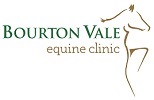Gastroscopy is the only reliable diagnostic tool for stomach ulcers in the horse, and this is the main reason for performing gastroscopy in horses.
The most common signs of gastric ulceration vary depending on what discipline the horse is working in.
In horses in training:
- Slow eating or poor appetite.
- Failure to maintain adequate body condition when in work.
- Poor performance (especially with increasing workload).
In sport and pleasure horses:
- Resentment of placing the saddle and especially tightening the girth.
- Placing and adjusting rugs.
- Kicking out when eating.
- Resentment of grooming chest and abdomen.
- Temperament changes.
- Sour, poor jumping performance.
- Aggression toward handlers.
- Resistance to leg aids and unwillingness to go forward under saddle.
- Bucking, rearing, bolting.
- Low grade recurrent colic, although this is rare.
Gastroscopy may also be used in the investigation of problems of the gullet, such as recurring cases of ‘choke’ or problems of the upper small intestine, such as inflammatory bowel disease (IBD). Biopsies can be harvested from the bowel lining to assist diagnosis.
Gastroscopy can be performed either at our clinic or at your home yard.
We also run monthly gastroscopy clinics where you can bring your horse in for gastroscopy examination at a reduced fee.
Our video gastroscopes are some 3.3m long, allowing examination of both the stomach and upper small intestine of even the largest horses.
The stomach is composed of two very distinct regions; the upper cream-coloured squamous lining and the lower glandular lining, which extends down to the level where the stomach empties out into the small intestine.
Prior to gastroscopy a period of approximately 15 hours of starvation whilst stabled on a bed that the horse will not eat is required. Ideally water should be withdrawn one to two hours prior to gastroscopy, but this is not critical.
The horse is sedated and the gastroscope passed via the nostril. This procedure is most easily achieved with three people.
Gastroscopy will determine which part(s) of the stomach are ulcerated and the extent and severity of any ulcers. These findings will guide the nature, dose and duration of treatment. It is very important to correlate the presenting clinical signs and gastroscopic findings.
Ulcer severity is graded on a scale of zero to four (grade zero: normal, grade one: minor inflammation and thickening due to wear and tear, grades two, three or four mild, moderate or severe depending on the number size, depth and extent of the ulcers). However, it should be noted that all horses are individuals and vary hugely as to the severity of the clinical signs that they may show when suffering from a particular grade of ulceration.
The acid suppressant drug omeprazole is used in treatment of gastric ulceration, but in some cases other treatments are used, such as coating agents (sucralfate), antacid gastroprotectants and antibiotics. Some cases require several weeks of therapy, others many months to resolve and control the ulcers. We can also look to reduce the cause of problems, through diet control and environment modification, in the hope of preventing further recurrences.
